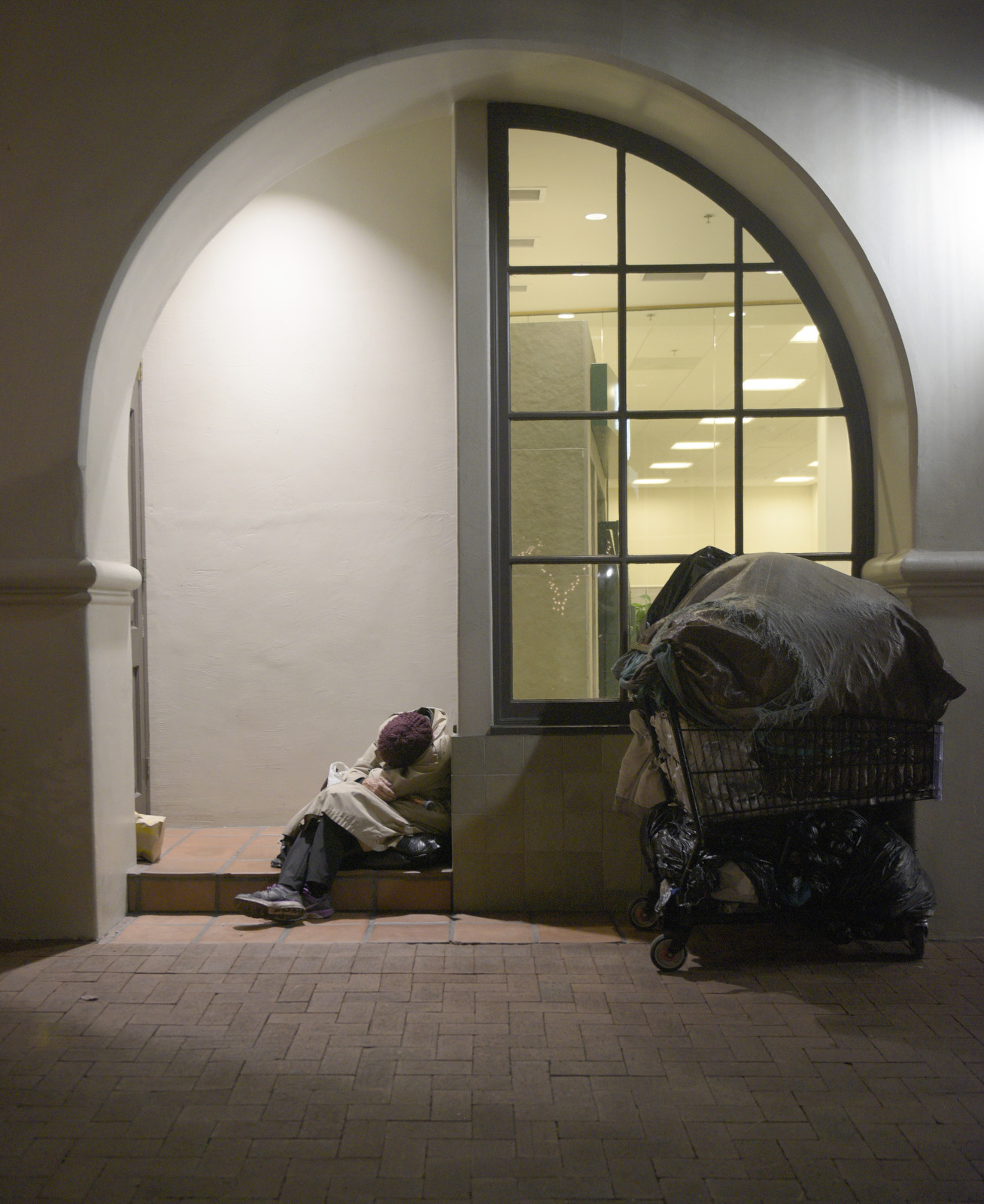Winter Demand for Homeless Shelter Triples
Should Freedom Warming Centers Open at 40 Degrees, Not 35?

Many say they go to PATH. Others say a bridge or a park with good overhangs is where they go. “I’m good as long as I have a heavy comforter,” said Richard Proctor. David Heller added that a kind homeless woman lent him extra blankets this past week. The damp cold has been miserable lately, and though Santa Barbara has an emergency homeless shelter, an unexpected dip in temperature on February 6 caught the Freedom Warming Center unawares.
Scott H., a homeless man who was waiting for a bus on Milpas Street last Friday, knew the PATH (People Assisting The Homeless) shelter offered rain beds during wet weather. It was reliable, he said, as long as you were sober and showed proof you’ve been working to improve your situation. And it didn’t make residents leave if it was still raining the next morning, which the Warming Centers do. Nonetheless, Scott thought the Warming Centers should get their own facility. They open for a low-temperature forecast of 35 degrees, no questions asked. Proctor’s view was that the centers should open at 42 degrees, because temperatures as low as 35 are uncommon in Santa Barbara.
The Freedom Warming Center in Santa Barbara is temporary and dependent on the generosity of churches for the shelter it offers. It opens its doors when a 50 percent chance of rain is forecast or temperatures dip to 35 degrees or below, and it cleans up and clears out by 6 a.m. The five centers — in Santa Maria, Lompoc, Carpinteria, and Santa Barbara (Isla Vista’s shelter church is being renovated) — are budgeted $50,000 to open up to 50 days between November 15 and March 31. They already have clocked nearly three times as many bed-nights as last year, said Kimberlee Albers, the county’s homeless program manager, 3,400 this year compared to 1,200 before. The county found another $50,000 to make available, she said, with still nearly two months to go in the rainy season. Supervisors Das Williams and Steve Lavagnino have written to Santa Maria and Santa Barbara to ask for additional funds to cover any shortfall.
Since the night the temperature was predicted to be 40 and dropped to 35 unexpectedly, homeless advocate Peter Marin has been barraging elected officials with emailed reminders that the centers are named for a homeless man nicknamed “Freedom” who died in his wheelchair of hypothermia. Marin argued that the 35-degree mark is too low: “The shelters must open when anything lower than 40 degrees is predicted.” He’s also asking them to use alternative locations, like City Hall or the county building, as other cities do.
Changing the temperature threshold is likely to double the nights the Warming Centers are open in Santa Barbara alone. So far in 2019, Santa Barbara had twice as many days below 40 degrees as it did below 35 degrees (12 versus 6, respectively). In 2018, between January 1 and March 31, Santa Barbara had seven days with recorded temperatures below 35 degrees, a number that rose to 24 days at the 40-degree mark.
The 790 homeless individuals who populate the city also have other alternatives to sleeping in doorways, vehicles, tents, or underpasses. The 69-bed Salvation Army, for example, makes 12 beds available for those who come for a screening. Transition House can take up to 70 people, generally 15-20 families, and fills quickly. The Rescue Mission, which has been under reconstruction, reopened its 34-bed women’s dorm this year. The men’s dorm has 13 beds reserved for men with health issues. Once finished, it will be able to hold 88 men year-round.
PATH has 80-100 rain beds available when a 50 percent chance of rain is called or there is a predicted low of 40 degrees or colder. Director Chuck Flacks said that no one is ever turned away from the shelter, which occupies the old Casa Esperanza building and can hold 200 adults altogether.
The inadequacy of homeless shelters concerned David Hopkins, an outreach worker with Doctors Without Walls. When shelters stay closed during poor weather, he observed, homeless people are at risk for cold-related illnesses, such as pneumonia or even hypothermia. “A lot of people are putting the dollar before human life,” he said.



